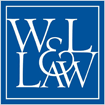Document Type
Article
Publication Title
Arizona State Law Journal
Publication Date
Summer 2020
Abstract
Pursuant to the SEC’s Rule 10b-5, in order to obtain a conviction for insider trading based upon a tipper-tippee theory, the government must prove that the tipper received a personal benefit for the tip, and that the tippee knew about that benefit. The last five years of blockbuster insider trading cases have focused on this seemingly nebulous personal benefit test, and the Supreme Court has been unable to clear the muddy waters. As a result, the parameters of insider trading remain hard to pin down and often shift depending on the facts of the most recent case. Two terms ago, the Supreme Court, in an unsurprising unanimous decision in Salman v. United States, reaffirmed the holding of Dirks, from which the personal benefit test arose. The Court in Salman, however, failed to elucidate the more problematic areas of insider trading, including the application of the personal benefit test if the tippee is not a trading relative or friend. Legal practitioners, legislators, and academics have offered up various solutions for the problem of having an amorphous law against insider trading, yet none have succeeded.
This Article suggests that the hubbub over defining the personal benefit element of insider trading—sure to reach a fever pitch the next time a cert petition on the issue is granted—may be misguided. This is because there may be a simpler way to bring an insider trading case. Since Sarbanes-Oxley, there has been a sleepy provision of the criminal code that could present an end-around to the morass of insider trading precedents under Rule 10b-5. Under 18 U.S.C. § 1348, the government can bring an insider trading case under the more general umbrella of securities fraud, which has scant jurisprudential precedent. In other words, the heavily litigated personal benefit test found in Dirks may not apply to a charge of insider trading under § 1348. The elements required to prove a charge under § 1348 are similar to other fraud-based offenses such as mail and wire fraud, health care fraud, and bank fraud. Whether § 1348 was intended to apply to insider trading in particular is an open question, and a broader question is whether the jurisprudential interpretation for the elements of the crime of insider trading as defined under Rule 10b-5 should be imported into the judicial interpretation of § 1348. In other words, if the conduct that constitutes criminal insider trading under Rule 10b-5 exists only if the elements of the Dirks test are met, then a § 1348 charge for criminal insider trading may create an entirely new scheme and definition of the crime. This Article analyzes the potential of this dual paradigm and argues that, given the uncertainty and shifting parameters of insider trading prohibitions, application of § 1348 to insider trading should be afforded the rule of lenity.
Recommended Citation
Karen E. Woody, The New Insider Trading, 52 Ariz. St. L.J. 594 (2020).

